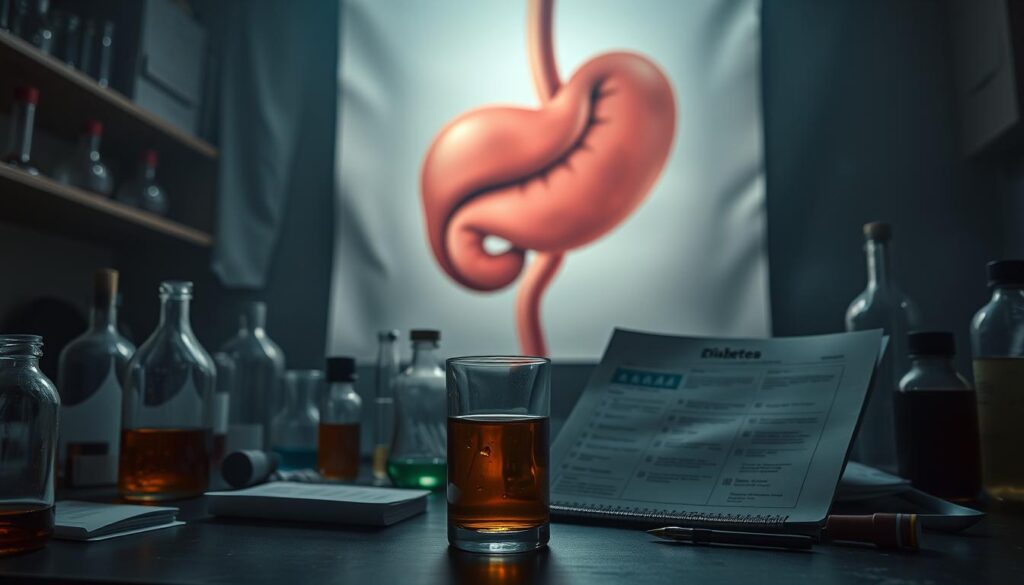Understanding the Risks and Benefits of Tattoos for People With Diabetes
Thinking about body art but unsure if it’s safe for your health? For those managing type diabetes, the idea of getting tattoo can raise important questions. Diabetes affects blood circulation and skin healing, which are critical factors during the tattooing process. This article explores the risks, precautions, and expert advice to help you make an informed decision.
Dr. Shirisha Avadhanula, an endocrinologist, highlights that breaking the skin barrier carries unique risks for individuals with diabetes. Elevated blood sugar levels can slow healing and increase the risk of infection. Proper blood glucose control and consultation with your doctor are essential steps before considering body art.
This guide will walk you through preparation, safety measures, and aftercare tips to minimize risks. Whether you’re considering a medical alert design or simply love ink, understanding the process is key to a safe experience.
Key Takeaways
- Diabetes can impact skin healing and increase infection risks during tattooing.
- Consult your doctor and ensure stable blood sugar levels before proceeding.
- Avoid areas with poor circulation, like feet or ankles, for safer tattooing.
- Choose a reputable tattoo parlor that follows strict hygiene practices.
- Proper aftercare is crucial to minimize complications and promote healing.
Table of Contents
Understanding Diabetes and Tattooing Risks
For individuals with diabetes, tattoos come with unique challenges and risks. Managing blood sugar levels and understanding how diabetes affects your body are critical before committing to body art. Diabetes can slow healing and increase the risk of complications, making it essential to weigh the pros and cons carefully.
How Diabetes Affects Skin Healing and Blood Circulation
Diabetes impacts the body’s ability to heal wounds efficiently. High blood sugar levels can damage blood vessels and nerves, reducing circulation to certain areas. This means that a tattoo, which involves piercing the skin thousands of times, may take longer to heal. Poor circulation in areas like the feet, shins, or ankles can further delay recovery and increase the risk of complications.
Potential Infection Risks and Complications
The tattooing process involves needles breaking the skin, which can introduce bacteria and lead to infections. For someone with diabetes, uncontrolled blood sugar weakens the immune system, making it harder to fight off infections. Severe complications, such as hepatitis, can arise if proper hygiene practices aren’t followed. The FDA emphasizes the importance of using single-use needles and sterile equipment to minimize these risks.
Certain areas of the body are riskier for tattooing. Avoid spots with poor circulation or those used for insulin injections, like the abdomen or thighs. Always consult your doctor and choose a reputable tattoo artist who follows strict hygiene protocols. Proper preparation and aftercare are key to a safe and successful experience.
- Diabetes slows skin healing and reduces blood flow, increasing tattoo risks.
- Uncontrolled blood sugar weakens the immune system, raising infection risks.
- Areas like feet, shins, and ankles should be avoided due to poor circulation.
- Always ensure the tattoo studio uses sterile, single-use needles.
Can I Get a Tattoo With Diabetes? Safety Guidelines
Managing diabetes requires careful planning, especially when considering body art. One of the most critical steps is ensuring your blood sugar levels are stable before proceeding. Uncontrolled glucose can slow healing and increase the risk of infection, making it essential to prioritize your health first.

Importance of Blood Sugar Control Before Getting Inked
Maintaining an A1C level below 7% is recommended for individuals with diabetes. This measure reflects your average blood sugar over the past three months and indicates how well your condition is managed. A stable A1C level reduces the risk of complications during the tattooing process and promotes faster healing.
Consulting your doctor is a crucial step. They can assess your individual health status and advise on any potential risks. For those with type diabetes, this conversation is especially important to ensure the procedure is safe for your specific condition.
- Optimal blood sugar control minimizes infection risks and supports proper healing.
- An A1C level below 7% is ideal for reducing complications.
- Discuss your plans with your healthcare provider to address any concerns.
- Controlled glucose levels are vital for a smooth tattooing experience.
Following these guidelines can help ensure the process is as safe as possible. The American Diabetes Association emphasizes the importance of managing your sugar levels to protect your overall health and well-being.
Preparing Your Body and Mind for a Tattoo
Before committing to ink, it’s essential to prepare both physically and mentally. For individuals managing type diabetes, this process involves extra steps to ensure safety and success. Proper preparation reduces the risk of infection and promotes smooth healing.

Consulting Your Doctor and Tattoo Artist
Start by discussing your plans with your doctor. They can assess your health and provide guidance on managing blood sugar levels during the process. A stable A1C level is crucial for minimizing complications.
Next, consult a reputable tattoo artist. Share your medical condition and ask about their hygiene practices. A professional artist will ensure the design and placement are safe for your specific needs.
Setting Up a Safe Environment at the Tattoo Parlor
Choosing the right tattoo parlor is critical. Look for a studio that follows strict sanitation protocols, such as using single-use needles and sterilized equipment. A clean environment reduces the risk of infection and ensures a safe experience.
Prepare mentally for the process. Complex designs may require multiple sessions, so plan accordingly. Staying calm and focused helps you manage any discomfort and enjoy the experience.
- Consult your doctor to assess your health and manage blood sugar levels.
- Choose a reputable tattoo artist who follows strict hygiene practices.
- Research the tattoo parlor to ensure it meets safety standards.
- Prepare mentally for the process, especially if the design is complex.
Conclusion
Deciding on body art while managing type diabetes requires thoughtful preparation. Understanding the risks and taking the right steps ensures a safer experience. Proper blood sugar control and consulting your doctor are essential before proceeding.
Aftercare plays a vital role in preventing infection and promoting healing. Follow all safety guidelines, from choosing a reputable artist to maintaining hygiene during the process. With careful planning, you can enjoy body art while managing your health effectively.
Remember, informed decision-making and professional guidance are key. If you have further questions, consult your healthcare provider for personalized advice. With the right approach, you can safely embrace body art as part of your journey.
FAQ
How does diabetes affect skin healing and blood circulation?
Diabetes can slow down skin healing and reduce blood circulation, especially in areas like the feet and lower legs. Poor circulation may delay recovery and increase the risk of complications during the tattooing process.
What are the potential infection risks for someone with diabetes?
Individuals with diabetes are more prone to infections due to slower healing and compromised immune responses. Proper blood sugar control and strict aftercare are essential to minimize these risks.
Why is blood sugar control important before getting a tattoo?
Maintaining stable blood sugar levels ensures better healing and reduces the risk of complications. High glucose levels can impair the body’s ability to recover, making it crucial to monitor and manage levels before the procedure.
Should you consult a doctor before getting a tattoo?
Yes, consulting a healthcare provider is vital to assess your health status and ensure your diabetes is well-managed. They can provide personalized advice and precautions to take before proceeding.
How can you set up a safe environment at the tattoo parlor?
Choose a reputable tattoo artist who follows strict hygiene practices. Ensure the parlor uses sterile equipment and maintains a clean environment to reduce the risk of infection.
What are the signs of infection to watch for after getting a tattoo?
Redness, swelling, excessive pain, pus, or warmth around the tattoo site may indicate an infection. Seek medical attention immediately if these symptoms occur.
What aftercare practices are essential for optimal healing?
Keep the tattoo clean, moisturized, and protected from direct sunlight. Follow your tattoo artist’s instructions and monitor the site closely for any unusual changes during the healing process.
How useful was this post?
Click on a star to rate it!
Share this article:
Meet Gluco 6
Blood sugar balance supplement
Tired of Type-2 controlling your life or worried that persistent high blood sugar may turn into something worse? Then yes, Gluco6 is right for you.
Gluco6 has already provided amazing blood sugar assistance for men and women in their 30s, 40, 50s and even 80s. Because it was formulated based on cutting-edge science and groundbreaking ingredients, Gluco6 is engineered to rapidly assist even the most erratic blood sugar levels.






